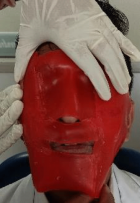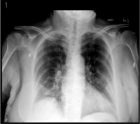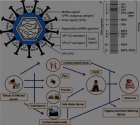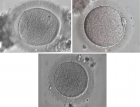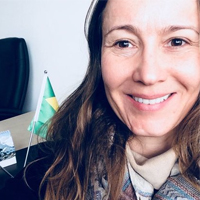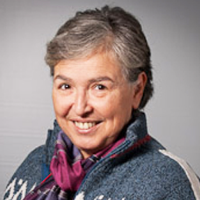Abstract
Observational Study
A baseline assessment of the knowledge, attitude, and practices of exclusive breastfeeding among women enrolled in a cluster randomized trial in Anambra State Nigeria
Izuchukwu Loveth Ejie, Maureen Ugonwa Anetoh, Rita Oluebubechukwu Atakulu, Brian Onyebuchi Ogbonna*, Amarachi Triumph Nwabanne, Chinazom Cynthia Agujiobi, Benjamin Maduabuchukwu Aniugbo, Ifeoma Blessing Umeh, Chijioke Maxwell Ofomata and Chisom God'swil
Published: 08 June, 2023 | Volume 6 - Issue 2 | Pages: 051-060
Background: Exclusive breastfeeding has great benefits for both the mother and the child. Few studies have been carried out on interventions to improve Exclusive Breastfeeding (EBF) practice by childbearing mothers. No study has formulated and/or implemented a hospital-based maternal counseling guide intervention to improve EBF practice. This baseline study assessed the knowledge, attitude, and practice of EBF on mothers who were enrolled in antenatal clinics for a cluster randomized trial and the disparity in the knowledge of EBF based on lactation, age, sex, and source of income.
Methods: We formulated a hospital-based counseling guide on exclusive breastfeeding, which is under implementation by prenatal and nursing mothers, to promote EBF practice in the study area. A cross-sectional study was conducted in two hospitals randomly selected from twelve hospitals in Anambra State. The study was among pregnant women who were in their second trimester. The data collection took place from March to April 2022. The data were analyzed using descriptive statistics and Chi-Square. The test of significance was set at p < 0.05.
Results: The control and the intervention arms had an equal number of enrolees (144) each and more than half of the participants were between the ages of 23 – 32 years. The majority of the participants showed adequate knowledge of exclusive breastfeeding as over 90% knew that EBF is important and capable of improving their baby's immunity. The participants demonstrated a positive attitude to exclusive breastfeeding and they had a significantly high level of practice of daily consumption of galactagogues. The study suggested that the majority did not practice breast milk extraction mainly because the process of extraction is painful and some do not know how to carry out the extraction.
Conclusion: The mothers have the requisite knowledge of the benefits of exclusive breastfeeding to their infants and themselves. However, they do not practice EBF. Interventions to improve EBF practice should focus on educating mothers on proper breast milk extraction and storage techniques.
Read Full Article HTML DOI: 10.29328/journal.cjog.1001129 Cite this Article Read Full Article PDF
Keywords:
Exclusive breastfeeding; Knowledge; Attitude; Practice; Mothers; Child nutrition; Public health; Nigeria
References
- World Health Organization. (WHO, 2015) www.who.int. 2015. https://www.who.int/news-room/questions-and-answers/item/breastfeeding
- World Health Organization. Infant and young child feeding. Who.int; World Health Organization: WHO, (2021, June 9). https://www.who.int/news-room/fact-sheets/detail/infant-and-young-child-feeding
- Babic A, Sasamoto N, Rosner BA, Tworoger SS, Jordan SJ, Risch HA, Harris HR, Rossing MA, Doherty JA, Fortner RT, Chang-Claude J, Goodman MT, Thompson PJ, Moysich KB, Ness RB, Kjaer SK, Jensen A, Schildkraut JM, Titus LJ, Cramer DW, Bandera EV, Qin B, Sieh W, McGuire V, Sutphen R, Pearce CL, Wu AH, Pike M, Webb PM, Modugno F, Terry KL. Association Between Breastfeeding and Ovarian Cancer Risk. JAMA Oncol. 2020 Jun 1;6(6):e200421. doi: 10.1001/jamaoncol.2020.0421. Epub 2020 Jun 11. PMID: 32239218; PMCID: PMC7118668.
- UNICEF (n.d.). Skin-to-skin contact. Baby Friendly Initiative. https://www.unicef.org.uk/babyfriendly/baby-friendly-resources/implementing-standards-resources/skin-to-skin-contact/#:~:text=There%20is%20a%20growing%20body
- Uruakpa FO, Ismond MAH, Akobundu ENT. Colostrum and its benefits: a review. Nutrition Research. 2002; 22(6): 755–767. https://doi.org/10.1016/s0271-5317(02)00373-1
- Giansanti F, Panella G, Leboffe L, Antonini G. Lactoferrin from Milk: Nutraceutical and Pharmacological Properties. Pharmaceuticals (Basel). 2016 Sep 27;9(4):61. doi: 10.3390/ph9040061. PMID: 27690059; PMCID: PMC5198036.
- Office of the Surgeon General (US), Centers for Disease Control and Prevention (US), & Office on Women's Health (US). Barriers to Breastfeeding in the United States. Nih.gov; Office of the Surgeon General (US); https://www.ncbi.nlm.nih.gov/books/NBK52688/
- Inano H, Kameya M, Sasano K, Matsumura K, Tsuchida A, Hamazaki K, Inadera H, Hasegawa T; Japan Environment and Children’s Study (JECS) Group. Factors influencing exclusive breastfeeding rates until 6 months postpartum: the Japan Environment and Children's Study. Sci Rep. 2021 Mar 25;11(1):6841. doi: 10.1038/s41598-021-85900-4. PMID: 33767216; PMCID: PMC7994576.
- Mogre V, Dery M, Gaa PK. Knowledge, attitudes and determinants of exclusive breastfeeding practice among Ghanaian rural lactating mothers. Int Breastfeed J. 2016 May 17;11:12. doi: 10.1186/s13006-016-0071-z. PMID: 27190546; PMCID: PMC4869336.
- Ejie IL, Eleje GU, Chibuzor MT, Anetoh MU, Nduka IJ, Umeh IB, Ogbonna BO, Ekwunife OI. A systematic review of qualitative research on barriers and facilitators to exclusive breastfeeding practice in sub-Saharan African countries. Int Breastfeed J. 2021 Jun 5;16(1):44. doi: 10.1186/s13006-021-00380-6. PMID: 34090461; PMCID: PMC8178897.
- Wiles LS. The effect of prenatal breastfeeding education on breastfeeding success and maternal perception of the infant. JOGN Nurs. 1984 Jul-Aug;13(4):253-7. doi: 10.1111/j.1552-6909.1984.tb01136.x. PMID: 6565110.
- Oche MO, Umar AS, Ahmed H. Knowledge and practice of exclusive breastfeeding in Kware, Nigeria. Afr Health Sci. 2011 Sep;11(3):518-23. PMID: 22275948; PMCID: PMC3261014.
- Emmanuel A. A Literature Review of the Factors That Influence Breastfeeding: An Application of the Health Believe Model. International Journal of Nursing and Health Science. 2015; 2(3): 28–36.
- Haroon S, Das JK, Salam RA, Imdad A, Bhutta ZA. Breastfeeding promotion interventions and breastfeeding practices: a systematic review. BMC Public Health. 2013;13 Suppl 3(Suppl 3):S20. doi: 10.1186/1471-2458-13-S3-S20. Epub 2013 Sep 17. PMID: 24564836; PMCID: PMC3847366.
- Ojofeitimi EO, Esimai OA, Owolabi OO, Oluwabusi, Olaobaju OF, Olanuga TO. Breast feeding practices in urban and rural health centres: impact of baby friendly hospital initiative in Ile-Ife, Nigeria. Nutr Health. 2000;14(2):119-25. doi: 10.1177/026010600001400204. PMID: 10904936.
- (2003, December 22). Global strategy for infant and young child feeding. www.who.int. https://www.who.int/publications/i/item/9241562218
- Seyyedi N, Rahmatnezhad L, Mesgarzadeh M, Khalkhali H, Seyyedi N, Rahimi B. Effectiveness of a smartphone-based educational intervention to improve breastfeeding. Int Breastfeed J. 2021 Sep 20;16(1):70. doi: 10.1186/s13006-021-00417-w. PMID: 34544429; PMCID: PMC8454121.
- Qureshi AM, Oche OM, Sadiq UA, Kabiru S. Using community volunteers to promote exclusive breastfeeding in Sokoto State, Nigeria. Pan Afr Med J. 2011;10:8. doi: 10.4314/pamj.v10i0.72215. Epub 2011 Sep 23. PMID: 22187590; PMCID: PMC3282933.
- Kohn MA SJ. Sample Size Calculators. UCSF CTSI. 2021; https://www.sample-size.net/
- Mahat JM. Comparison of Knowledge, Attitudes, and Practices on Exclusive Breastfeeding Between Primiparous and Multiparous Mothers Attending Wajir District Hospital, Wajir County, Kenya. 2012; 1-10. http://ir-library.ku.ac.ke/bitstream/handle/123456789/17602/comparison%20of%20knowledge%20attitude.......pdf?sequence=1&isAllowed=y
- Ochola SA. Evaluation of two counseling strategies improving exclusive breastfeeding among HIV-negative mothers in Kibera slum, Nairobi, Kenya: a randomized controlled trial. Stellenbosch: Stellenbosch University; 2008. http://scholar.sun.ac.za/handle/10019.1/1460.
- Cronbach LJ, Shavelson RJ. My current thoughts on coefficient alpha and successor procedures. Educ Psychol Meas. 2004; 64: 391-418.
- Mogre V, Dery M, Gaa PK. Knowledge, attitudes and determinants of exclusive breastfeeding practice among Ghanaian rural lactating mothers. Int Breastfeed J. 2016 May 17;11:12. doi: 10.1186/s13006-016-0071-z. PMID: 27190546; PMCID: PMC4869336.
- Gwen D. Breastfeeding on demand: Benefits, questions, and evidence-based tips. Parenting Science. 2019. https://parentingscience.com/breastfeeding-on-demand/
- Khasawneh W, Kheirallah K, Mazin M, Abdulnabi S. Knowledge, attitude, motivation and planning of breastfeeding: a cross-sectional study among Jordanian women. Int Breastfeed J. 2020 Jul 1;15(1):60. doi: 10.1186/s13006-020-00303-x. PMID: 32611353; PMCID: PMC7329471.
- Dipendra K, Yadav Gupta N. Infant and Young Child Feeding Practices among Mothers in Rural Areas of Mahottari District of Nepal. Journal of Gandaki Medical College –Nepal. 2013; 6(2):1.
- Cacho NT, Lawrence RM. Innate Immunity and Breast Milk. Front Immunol. 2017 May 29;8:584. doi: 10.3389/fimmu.2017.00584. PMID: 28611768; PMCID: PMC5447027.
- Gao H, Wang J, An J, Liu S, Li Y, Ding S, Zhang Y, Chen Y. Effects of prenatal professional breastfeeding education for the family. Sci Rep. 2022 Apr 2;12(1):5577. doi: 10.1038/s41598-022-09586-y. PMID: 35368032; PMCID: PMC8976833.
- Crider C. No Breast Milk after Delivery: What to Do, Causes, Treatments. Healthline (2020, March 29). https://www.healthline.com/health/breastfeeding/no-breast-milk-after-delivery-what-to-do#what-causes-a-delay
- McBride GM, Stevenson R, Zizzo G, Rumbold AR, Amir LH, Keir AK, Grzeskowiak LE. Use and experiences of galactagogues while breastfeeding among Australian women. PLoS One. 2021 Jul 1;16(7):e0254049. doi: 10.1371/journal.pone.0254049. PMID: 34197558; PMCID: PMC8248610.
- Ogunyinka V. COVID-19 hardship: Bauchi women resort to Kunu to breastfeed babies. 2020. Vanguard News. https://www.vanguardngr.com/2020/11/covid-19-hardship-bauchi-women-resort-to-kunu-to-breastfeed-babies/
- World Health Organization. 2022. Accessed online on 3rd March 2023 at Ten steps to successful breastfeeding. Www.who.int. https://www.who.int/teams/nutrition-and-food-safety/food-and-nutrition-actions-in-health-systems/ten-steps-to-successful-breastfeeding
- Centers for Disease Control and Prevention. Proper Storage and Preparation of Breast Milk. Centers for Disease Control and Prevention. 2020. https://www.cdc.gov/breastfeeding/recommendations/handling_breastmilk.htm
- Win NN, Binns CW, Zhao Y, Scott JA, Oddy WH. Breastfeeding duration in mothers who express breast milk: a cohort study. Int Breastfeed J. 2006 Dec 22;1:28. doi: 10.1186/1746-4358-1-28. PMID: 17184553; PMCID: PMC1764725.
Figures:
Similar Articles
-
Is It Possible to End Female Circumcision in Africa?Fiona Dunn*. Is It Possible to End Female Circumcision in Africa? . . 2018 doi: 10.29328/journal.cjog.1001002; 1: 007-013
-
Screening of Gestational diabetes mellitusGehan Farid*,Sarah Rabie Ali*,Reem Mohammed Kamal. Screening of Gestational diabetes mellitus . . 2018 doi: 10.29328/journal.cjog.1001003; 1: 014-023
-
Trans-abdominal cervical cerclage revisitedJohn Svigos*. Trans-abdominal cervical cerclage revisited. . 2019 doi: 10.29328/journal.cjog.1001019; 2: 017-024
-
Determinants of women’s perceived satisfaction on Antenatal care in urban Ghana: A cross-sectional studyAkowuah Jones Asafo*,Danquah Benedicta Adoma. Determinants of women’s perceived satisfaction on Antenatal care in urban Ghana: A cross-sectional study. . 2019 doi: 10.29328/journal.cjog.1001022; 2: 038-053
-
Maternal mortality and factors affecting it, among pregnant women in Abeokuta South, NigeriaTumilara Busayo Amoo*,Oyinkansola Sarah Ajayi. Maternal mortality and factors affecting it, among pregnant women in Abeokuta South, Nigeria. . 2019 doi: 10.29328/journal.cjog.1001025; 2: 071-078
-
Oral Clindamycin and Metronidazole in the treatment of bacterial vaginosis in pregnant black women: Comparison of efficacy and pregnancy outcomeIjeoma CC*,Nyengidiki TK,Bassey G,Ogu RN,Alegbeleye JO,Wariso KT. Oral Clindamycin and Metronidazole in the treatment of bacterial vaginosis in pregnant black women: Comparison of efficacy and pregnancy outcome. . 2020 doi: 10.29328/journal.cjog.1001040; 3: 001-006
-
Anal cytology in immunocompetent patients with high-grade intraepithelial neoplasia (CIN II and CIN III)Marcio Erik Franco Ribeiro*,Lyliana Coutinho Resende Barbosa,Taylor Brandão Schnaider. Anal cytology in immunocompetent patients with high-grade intraepithelial neoplasia (CIN II and CIN III). . 2020 doi: 10.29328/journal.cjog.1001041; 3: 007-012
-
Effectiveness of prenatal intensive counselling on knowledge, attitude and acceptance of post placental intrauterine contraceptive device among mothersM Shanthini,Manjubala Dash*,A Felicia Chitra,S Jayanthi,P Sujatha. Effectiveness of prenatal intensive counselling on knowledge, attitude and acceptance of post placental intrauterine contraceptive device among mothers. . 2020 doi: 10.29328/journal.cjog.1001044; 3: 021-025
-
Timely initiation of breastfeeding and associated factors among mothers who have infants less than six months of age in Gunchire Town, Southern Ethiopia 2019Ephrem Yohannes*,Tsegaye Tesfaye. Timely initiation of breastfeeding and associated factors among mothers who have infants less than six months of age in Gunchire Town, Southern Ethiopia 2019. . 2020 doi: 10.29328/journal.cjog.1001045; 3: 026-032
-
Triple negative breast cancer: Early stages management and evolution, a two years experience at the department of breast cancer of CHSFBouzid Nassima,Darido Jessie*,Diari Jed,Dussour Chloe,Ezenfis Joel,Cahn Virginie,Guekeu Steven,Rigonnot Luc. Triple negative breast cancer: Early stages management and evolution, a two years experience at the department of breast cancer of CHSF. . 2020 doi: 10.29328/journal.cjog.1001052; 3: 065-078
Recently Viewed
-
Nanoencapsulated Extracts from Leaves of Bauhinia forficata Link: In vitro Antioxidant, Toxicogenetic, and Hypoglycemic Activity Effects in Streptozotocin-induced Diabetic MiceBárbara Verônica Cardoso de Souza, Alessandra Braga Ribeiro*, Rita de Cássia Meneses Oliveira, Julianne Viana Freire Portela, Ana Amélia de Carvalho Melo Cavalcante, Esmeralda Maria Lustosa Barros, Luís Felipe Lima Matos, Tarsia Giabardo Alves, Maria. Nanoencapsulated Extracts from Leaves of Bauhinia forficata Link: In vitro Antioxidant, Toxicogenetic, and Hypoglycemic Activity Effects in Streptozotocin-induced Diabetic Mice. Arch Pharm Pharma Sci. 2024: doi: 10.29328/journal.apps.1001063; 8: 100-115
-
Oral Suspension as Versatile Galenic Formulation in PediatryMauro Luisetto*, Almukthar N, Edbey K, Mashori GR, Fiazza C, Dona’ l, Cabianca L, Latyshev O. Oral Suspension as Versatile Galenic Formulation in Pediatry. Arch Pharm Pharma Sci. 2024: doi: 10.29328/journal.apps.1001062; 8: 091-099
-
Modulation of Microbiota and its Impact on DepressionKousik Maparu*. Modulation of Microbiota and its Impact on Depression. Arch Pharm Pharma Sci. 2024: doi: 10.29328/journal.apps.1001061; 8: 089-090
-
Experiences of Consumers on the Health Effects of Fake and Adulterated Medicines in NigeriaChijioke M Ofomata, Nkiru N Ezeama, Chinelo Ezejiegu*. Experiences of Consumers on the Health Effects of Fake and Adulterated Medicines in Nigeria. Arch Pharm Pharma Sci. 2024: doi: 10.29328/journal.apps.1001059; 8: 075-081
-
Beta-1 Receptor (β1) in the Heart Specific Indicate to StereoselectivityRezk Rezk Ayyad*, Ahmed Mohamed Mansour, Ahmed Mohamed Nejm, Yasser Abdel Allem Hassan, Norhan Hassan Gabr, Ahmed Rezk Ayyad. Beta-1 Receptor (β1) in the Heart Specific Indicate to Stereoselectivity. Arch Pharm Pharma Sci. 2024: doi: 10.29328/journal.apps.1001060; 8: 082-088
Most Viewed
-
Evaluation of Biostimulants Based on Recovered Protein Hydrolysates from Animal By-products as Plant Growth EnhancersH Pérez-Aguilar*, M Lacruz-Asaro, F Arán-Ais. Evaluation of Biostimulants Based on Recovered Protein Hydrolysates from Animal By-products as Plant Growth Enhancers. J Plant Sci Phytopathol. 2023 doi: 10.29328/journal.jpsp.1001104; 7: 042-047
-
Sinonasal Myxoma Extending into the Orbit in a 4-Year Old: A Case PresentationJulian A Purrinos*, Ramzi Younis. Sinonasal Myxoma Extending into the Orbit in a 4-Year Old: A Case Presentation. Arch Case Rep. 2024 doi: 10.29328/journal.acr.1001099; 8: 075-077
-
Feasibility study of magnetic sensing for detecting single-neuron action potentialsDenis Tonini,Kai Wu,Renata Saha,Jian-Ping Wang*. Feasibility study of magnetic sensing for detecting single-neuron action potentials. Ann Biomed Sci Eng. 2022 doi: 10.29328/journal.abse.1001018; 6: 019-029
-
Pediatric Dysgerminoma: Unveiling a Rare Ovarian TumorFaten Limaiem*, Khalil Saffar, Ahmed Halouani. Pediatric Dysgerminoma: Unveiling a Rare Ovarian Tumor. Arch Case Rep. 2024 doi: 10.29328/journal.acr.1001087; 8: 010-013
-
Physical activity can change the physiological and psychological circumstances during COVID-19 pandemic: A narrative reviewKhashayar Maroufi*. Physical activity can change the physiological and psychological circumstances during COVID-19 pandemic: A narrative review. J Sports Med Ther. 2021 doi: 10.29328/journal.jsmt.1001051; 6: 001-007

HSPI: We're glad you're here. Please click "create a new Query" if you are a new visitor to our website and need further information from us.
If you are already a member of our network and need to keep track of any developments regarding a question you have already submitted, click "take me to my Query."







